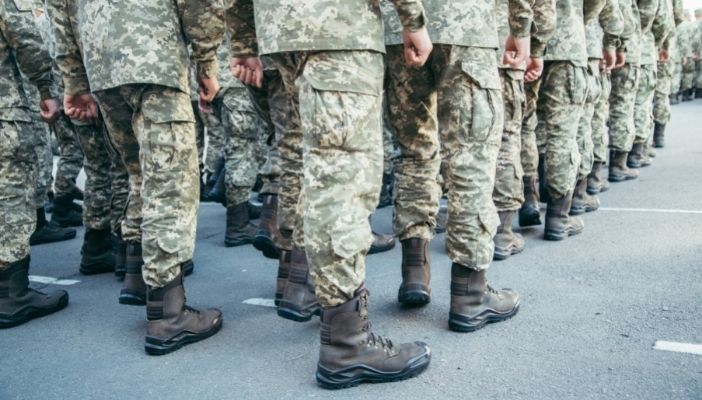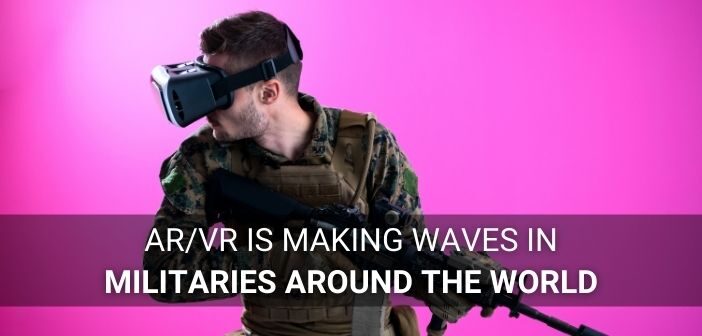In the wake of World Wars 1 & 2, the last eight decades or so have appeared to most to be a time of peace. In tandem, combat readiness has increasingly become a focal point of government spending the world over. It appears counter-intuitive to maintain peace by being armed to the teeth – however, since the development of atomic bombs by multiple countries, the fear of mutual destruction has proven to be a far more effective motivator for peace than purely mutual cooperation.
With technological superiority being key to winning modern combat scenarios, military R&D and tactical training is as much a matter of innovation as it is of investment. Acquiring that edge calls for significant cross-pollination of ideas from emerging technological fields. In that vein, multiple first world nations have started tapping into AR/VR in the last couple of years.
The usage of AR/VR in tactical training is not entirely new. Virtual reality as we know did not come into play until NASA used the technology to train their space crews in the 1980s. Some even date the usage of the technology as early as the 1960s, when the computer screen pen was used for interacting with defence systems. However, the technology didn’t not make significant headway in industries beyond entertainment and medicine until much recently.

Image Courtesy: Özgür Güvenç from Adobe Stock
The immersive experience simulated by VR and the live graphics capabilities of AR provides militaries the world over the ability to enhance their efficacy and potency in myriad ways. Here are a few of them:
VR in Military Training
With the improving graphic capabilities of VR software and headsets, military forces can recreate extreme scenarios for training their soldiers without incurring actual risk. Professions like medicine have started using VR to make surgery practice less traumatizing for students; the military is following their lead in creating training modules to replace expensive drills designed to mimic high pressure situations.
Major militaries such as the UK and USA are already making VR a mainstay of training programs. With a powerful graphics engine and readily available digital assets, virtual reality modules can enable training in any location, without using real-life resources such as ammunition, vehicles, petroleum etc.

Image Courtesy: hiv360 from Adobe Stock
The ability to conduct virtual training instead of real-life demonstrations offers value beyond cost-effectiveness and convenience. In a controlled simulation, trainees can be prepared for high-risk situations like emergency landings, crashes and ambushes. VR can help train an entire squad of soldiers in a common virtual environment, contributing to improved team coordination and specialized skill training. Due to this advantage, big defense contractors are now including VR drills as a part of military training packages.
VR for Training Soft Skills
The scope of military training does not stop at typical tactical drills and combat skills; the use of VR can also help impart soft skills to military personnel. Wars cause immense psychological stress, and the scars left on a soldier’s mind after years of service may irreparably damage his future prospects, even leading to suicide in extreme cases
The US Airforce is using immersive VR as part of their suicide prevention strategy. VR technology is being employed to recreate accurate simulations of stress and shock symptoms. While differing vastly in scale, the interpersonal simulations add just as much value to military training as combat scenarios do, both giving military personnel the tools they need to better support their teammates.

Image Courtesy: Rawpixel.com from Adobe Stock
AR in Military Operations
While VR can recreate real-life scenarios in graphic realities for infinite test runs and practice, AR can be used by soldiers live on the field. With ruggedized AR/ VR goggles, armies can equip their soldiers with highly advanced information systems that can be accessed on the move. Using AR googles, soldiers can use overlays for target identification and assistance, view and path finding, and information gathering to gain tactical advantage.
This futuristic information display capability has really captivated the attention of the US army, which has partnered with Microsoft HoloLens in 2019 to put out 60,000 pieces of VR headsets capable of AR information inlays for soldiers to use in the field. The project – which will reportedly add $20 billion to Microsoft’s treasury – is presently on pause, with the delivery deadline pushed to September 2022.
Equipment Maintenance with VR
Most machinery used in the military is highly specialized and technical in nature. Their maintenance, as a result, is often costly and may call for specialized training. Any kind of lapse in diligence in taking care of these assets may not only cause massive monetary liability, but may even put the lives of soldiers at risk.

Image Courtesy: phpetrunina14 from Adobe Stock
In order to equip military engineers with the know-how needed to repair and maintain important machinery, VR technology is quickly becoming the best available option. With the help of AR/ VR, live 3D models and visual guides can be created to ease the process of learning about highly sophisticated machinery, reducing the margin of error.
GridRaster, a company that uses AI, AR and VR, is revolutionising the way military equipment maintenance is done. By creating VR models of machinery through scans, the company allows engineers to use 3D schematics to understand what they are handling, followed by an AR guide to help identify components. The company claims that US military engineers with less than a year of experience were able to outperform seasoned personnel with the help of their product.
Even as the world inches towards peace, militaries around the world continue to stay prepared for any bad situation. Unlike most military tech that focuses on enhancing the lethality of soldiers, AR/VR focuses on increasing operational efficiency, making its application versatile yet cost effective. As tactical edge, and not raw firepower, become the new yardstick for measuring a military’s strength, AR/VR tech has found a permanent foothold in the art of war.

